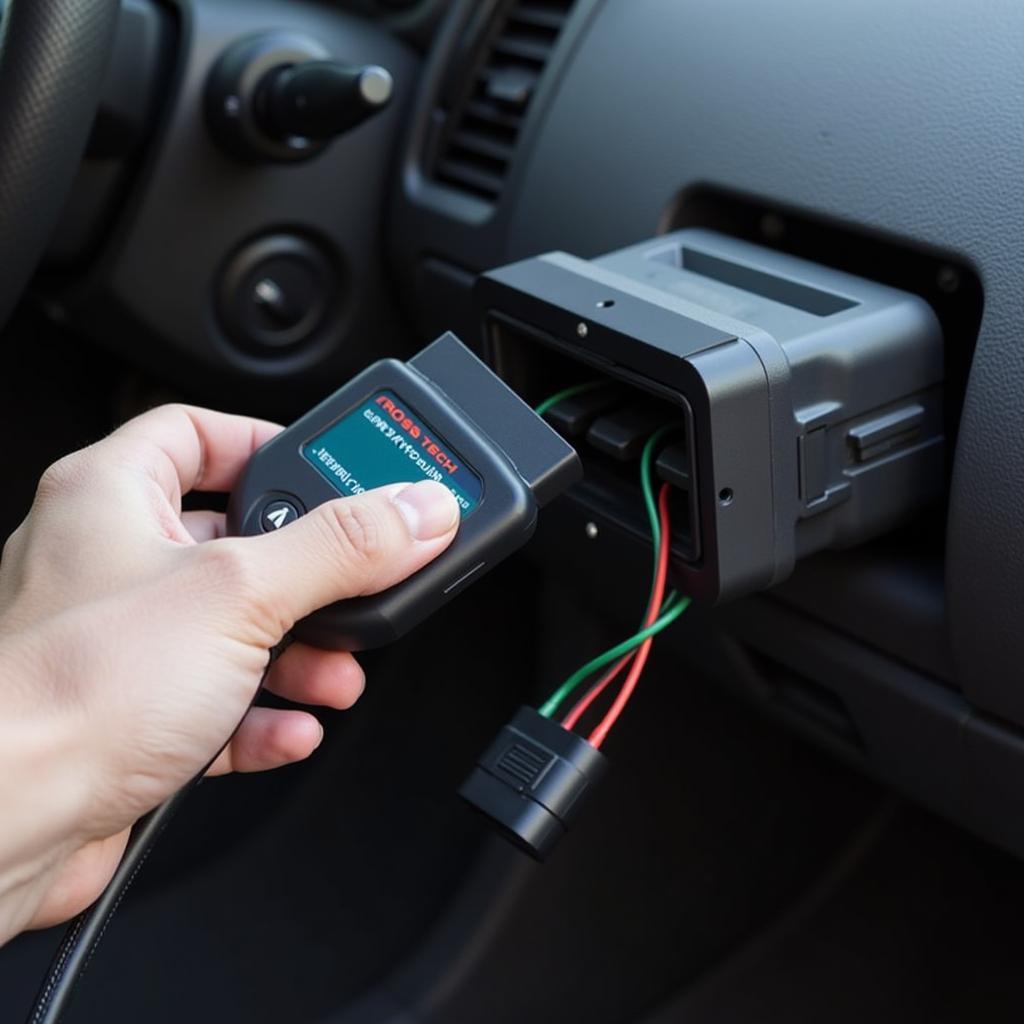Your cart is currently empty!

Mastering European Auto Repair with Ross-Tech Diagnostic Software
Ross-Tech diagnostic software is a game-changer for anyone working with European automobiles. Whether you’re a seasoned mechanic, a DIY enthusiast, or a shop owner looking to boost efficiency, this comprehensive guide will dive deep into the power and versatility of Ross-Tech VCDS (Vag-Com Diagnostic System). We’ll explore everything from basic diagnostics to advanced coding and adaptations, helping you unlock the full potential of this essential tool.
Understanding the Power of Ross-Tech VCDS
Ross-Tech’s VCDS stands out as the premier diagnostic solution for vehicles from the VAG group (Volkswagen, Audi, Group), including Volkswagen, Audi, Seat, Skoda, Bentley, and Lamborghini. Unlike generic OBD-II scanners, VCDS offers unparalleled depth and functionality, providing access to all the control modules within these vehicles. This allows for precise diagnostics, advanced coding, and even adaptations to customize vehicle behavior.
Why Choose Ross-Tech Diagnostic Software for European Automobiles?
Simply put, Ross-Tech provides the most comprehensive and accurate diagnostics for European vehicles. Generic OBD-II scanners often provide only basic fault codes, leaving you guessing about the root cause. VCDS, on the other hand, offers detailed information about each fault code, including freeze frame data, measuring block values, and even access to factory repair manuals. This comprehensive data empowers you to diagnose and fix issues quickly and efficiently.
What if you could customize your car’s behavior to match your preferences? With VCDS, you can. This powerful software allows you to access coding and adaptation channels, allowing you to tweak various settings, such as automatic locking, lighting behavior, and convenience features. Think of it as unlocking hidden potential within your car.
Getting Started with Ross-Tech VCDS: A Step-by-Step Guide
- Choose the right interface: Ross-Tech offers a range of interfaces, from the budget-friendly HEX-V2 to the professional-grade HEX-NET. Select the interface that best suits your needs and budget.
- Install the software: Download the latest version of VCDS software from the official Ross-Tech website.
- Connect the interface: Plug the interface into your vehicle’s OBD-II port and connect it to your computer.
- Run the software: Launch the VCDS software and follow the on-screen prompts to identify your vehicle and establish communication.
 Ross-Tech VCDS Connected to Car
Ross-Tech VCDS Connected to Car
“The depth of information provided by VCDS is invaluable. It’s like having a direct line to the car’s brain,” says Michael Schmidt, a master automotive technician with over 20 years of experience. “I wouldn’t trust any other diagnostic tool for my European vehicles.”
Unleashing Advanced Features with Ross-Tech
Ross-Tech’s software is more than just a diagnostic tool; it’s a powerful platform for understanding and customizing your European car. Beyond reading and clearing fault codes, VCDS offers access to:
- Measuring blocks: Monitor live data from various sensors and systems, giving you real-time insights into your car’s performance.
- Output tests: Activate individual components, such as lights, motors, and relays, to pinpoint the source of a problem.
- Basic settings: Perform resets and calibrations for various systems, ensuring optimal functionality.
 Ross-Tech VCDS Advanced Features
Ross-Tech VCDS Advanced Features
“VCDS has saved me countless hours and headaches,” shares Maria Sanchez, an independent automotive repair shop owner. “The ability to perform coding and adaptations allows me to offer specialized services that my competitors can’t match.”
Troubleshooting Common Issues with Ross-Tech Diagnostic Software
Encountering problems with your Ross-Tech software? Don’t worry; most issues can be resolved quickly. Check the Ross-Tech website for comprehensive troubleshooting guides and FAQs. Common solutions include:
- Updating your software to the latest version.
- Ensuring proper driver installation.
- Checking for communication errors between the interface and the vehicle.
“Investing in Ross-Tech is investing in peace of mind,” says David Miller, a certified Ross-Tech trainer. “The quality, support, and community surrounding this software are second to none.”
In conclusion, Ross-Tech diagnostic software for European automobiles is an essential tool for anyone working with these vehicles. Its comprehensive diagnostics, advanced coding capabilities, and user-friendly interface make it a must-have for mechanics, DIYers, and shop owners alike. For expert advice and support, connect with us at vcdstool, located at 6719 W 70th Ave, Arvada, CO 80003, USA, or call us at +1 (641) 206-8880 and our email address: vcdstool@gmail.com.
FAQ
-
Is Ross-Tech VCDS compatible with all European cars? VCDS is primarily designed for VAG group vehicles (Volkswagen, Audi, Seat, Skoda, Bentley, and Lamborghini).
-
What is the difference between the various Ross-Tech interfaces? The interfaces differ in features and price. The HEX-V2 is a good starting point for most users, while the HEX-NET offers advanced features like wireless connectivity.
-
Can I use Ross-Tech VCDS to code my car? Yes, VCDS allows access to coding and adaptation channels, enabling you to customize various vehicle settings.
-
Where can I find support for Ross-Tech VCDS? The Ross-Tech website offers comprehensive documentation, FAQs, and a vibrant user forum.
-
Is Ross-Tech VCDS worth the investment? Absolutely. For those working with European vehicles, VCDS offers unmatched diagnostic power and functionality.
-
Can I damage my car by using Ross-Tech VCDS? While unlikely, incorrect coding or adaptations could potentially cause issues. Always follow instructions carefully and back up your existing settings.
-
How often is the Ross-Tech VCDS software updated? Ross-Tech regularly releases updates to improve functionality and compatibility with new vehicle models.
by
Tags:
Leave a Reply